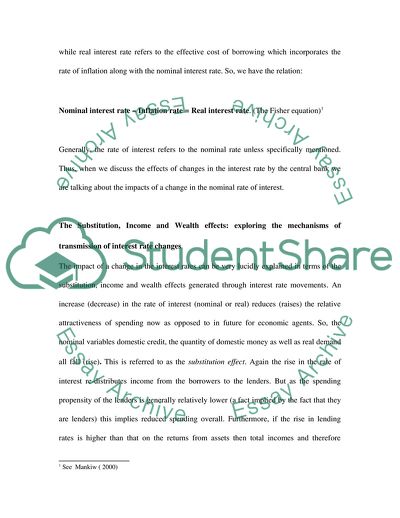Cite this document
(Real vs Nominal Interest Coursework Example | Topics and Well Written Essays - 1500 words, n.d.)
Real vs Nominal Interest Coursework Example | Topics and Well Written Essays - 1500 words. https://studentshare.org/finance-accounting/1709823-discuss-the-main-channels-through-which-changes-in-central-bank-interest-rates-have-an-impact-on-real-and-nominal-economy-in-particular-you-should-discuss-the
Real vs Nominal Interest Coursework Example | Topics and Well Written Essays - 1500 words. https://studentshare.org/finance-accounting/1709823-discuss-the-main-channels-through-which-changes-in-central-bank-interest-rates-have-an-impact-on-real-and-nominal-economy-in-particular-you-should-discuss-the
(Real Vs Nominal Interest Coursework Example | Topics and Well Written Essays - 1500 Words)
Real Vs Nominal Interest Coursework Example | Topics and Well Written Essays - 1500 Words. https://studentshare.org/finance-accounting/1709823-discuss-the-main-channels-through-which-changes-in-central-bank-interest-rates-have-an-impact-on-real-and-nominal-economy-in-particular-you-should-discuss-the.
Real Vs Nominal Interest Coursework Example | Topics and Well Written Essays - 1500 Words. https://studentshare.org/finance-accounting/1709823-discuss-the-main-channels-through-which-changes-in-central-bank-interest-rates-have-an-impact-on-real-and-nominal-economy-in-particular-you-should-discuss-the.
“Real Vs Nominal Interest Coursework Example | Topics and Well Written Essays - 1500 Words”. https://studentshare.org/finance-accounting/1709823-discuss-the-main-channels-through-which-changes-in-central-bank-interest-rates-have-an-impact-on-real-and-nominal-economy-in-particular-you-should-discuss-the.


